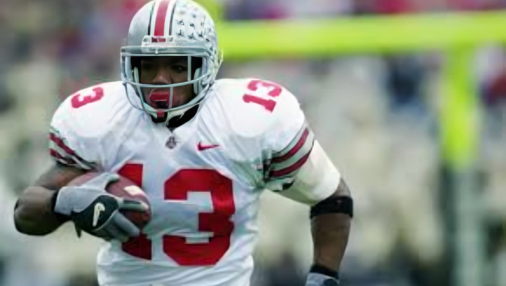Maurice Clarett: A Story of Talent, Turmoil, and Triumph
Maurice Clarett is a name that resonates deeply in the world of American football — not just because of his athletic brilliance, but due to the rollercoaster of controversy, failure, redemption, and transformation that followed him. From a college football superstar to a fallen prodigy and ultimately a redeemed mentor, Clarett’s journey is both cautionary and inspirational.
A Star Is Born
Maurice Clarett was born on October 29, 1983, in Youngstown, Ohio — a city known for its toughness and gritty work ethic. His athletic potential was evident from an early age. In high school at Warren G. Harding, Clarett emerged as one of the top football prospects in the nation. He was named USA Today’s Offensive High School Player of the Year in 2001, catching the attention of college recruiters nationwide.
Eventually, Clarett committed to The Ohio State University, and it didn’t take long for him to make history.
Freshman Sensation at Ohio State
In 2002, Clarett became the first true freshman to start at running back for the Buckeyes. His impact was immediate and electrifying. He rushed for 1,237 yards and 18 touchdowns that season, helping lead Ohio State to an undefeated 14-0 record and a national championship.
His performance in the 2003 Fiesta Bowl against the Miami Hurricanes was iconic. Clarett not only rushed for a touchdown but also made a game-changing play by stripping the ball from Miami safety Sean Taylor after an interception — a moment etched in college football history. At just 19 years old, Clarett appeared destined for NFL greatness.
The Fall: Legal Issues and NCAA Troubles
However, Clarett’s career quickly took a dark turn. He was suspended for the entire 2003 season due to NCAA violations, including allegations that he received improper benefits and lied to investigators.
Things worsened when he attempted to challenge the NFL’s rule requiring players to be three years removed from high school before entering the draft. Though he initially won a court ruling, it was overturned on appeal, and Clarett was ineligible to play professionally in 2004.
By the time he entered the 2005 NFL Draft, Clarett was out of shape and under intense scrutiny. He was drafted by the Denver Broncos in the third round, but he never played a single regular-season snap in the NFL.
Legal Troubles and Incarceration
In 2006, Clarett’s life spiraled further out of control. He was arrested twice that year — first for aggravated robbery and later in a high-speed police chase where he was found heavily armed and wearing a bulletproof vest.
He was sentenced to 7.5 years in prison after pleading guilty to robbery and weapons charges, serving over three years behind bars. This period marked the lowest point in Clarett’s life. But it was also the beginning of a slow, deliberate transformation.
Redemption and Transformation
During his time in prison, Clarett made a conscious decision to change. He educated himself, read extensively, and focused on personal development. Upon release in 2010, he set out to rebuild his life — not as a football player, but as a businessman, speaker, and advocate for mental health and prison reform.
He co-founded The Red Zone, a behavioral health agency in Ohio that helps youth and adults with mental health and addiction issues. Clarett openly shares his experiences with depression, anxiety, and impulsive behavior — helping to reduce stigma and offer hope to others.
He also wrote a memoir, "One and Done", and has become a sought-after motivational speaker, especially among athletes, incarcerated individuals, and at-risk youth.
Legacy and Lessons
Maurice Clarett's story is far more than just football. It’s about wasted talent — but also about second chances, growth, and the power of taking responsibility. His journey offers important lessons for young athletes and society at large:
- Talent alone isn’t enough — discipline, humility, and support systems are equally vital.
- Mental health matters, especially in high-pressure environments like sports.
- Redemption is possible — with effort, honesty, and a willingness to evolve.
Today, Clarett is not only respected for what he was as an athlete, but admired for what he has become as a human being. He didn’t just escape the pitfalls of his past — he used them to build a new foundation for his future and for others following similar paths.
Conclusion
Maurice Clarett’s life story is complex and filled with highs and lows. From the glory of a national championship to the despair of a prison cell, and eventually to redemption as an advocate and entrepreneur — Clarett’s journey reminds us that no matter how far one falls, there is always a path back through accountability, self-awareness, and purpose.
He may never have fulfilled his potential on the football field, but in many ways, Maurice Clarett’s greatest victories have come off of it.

